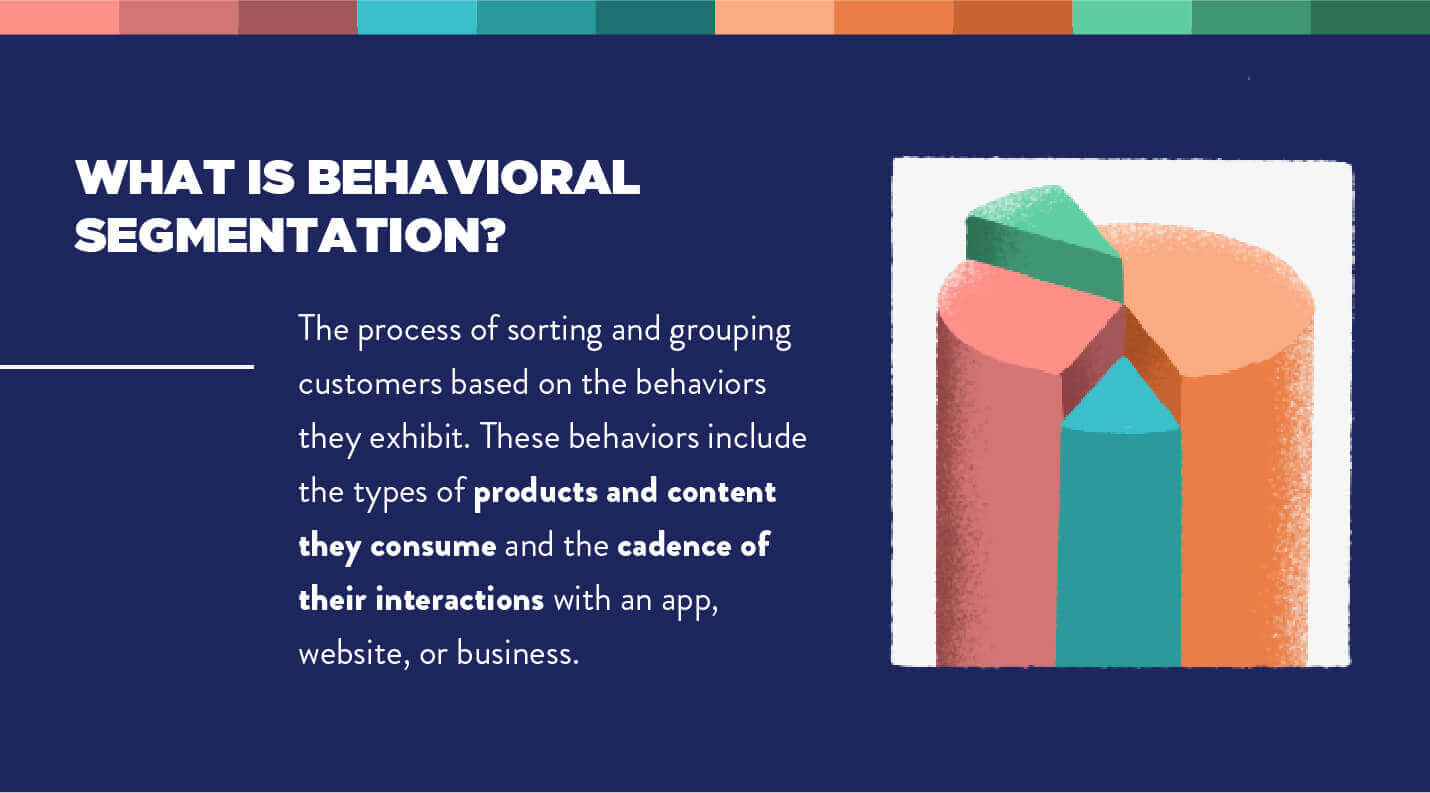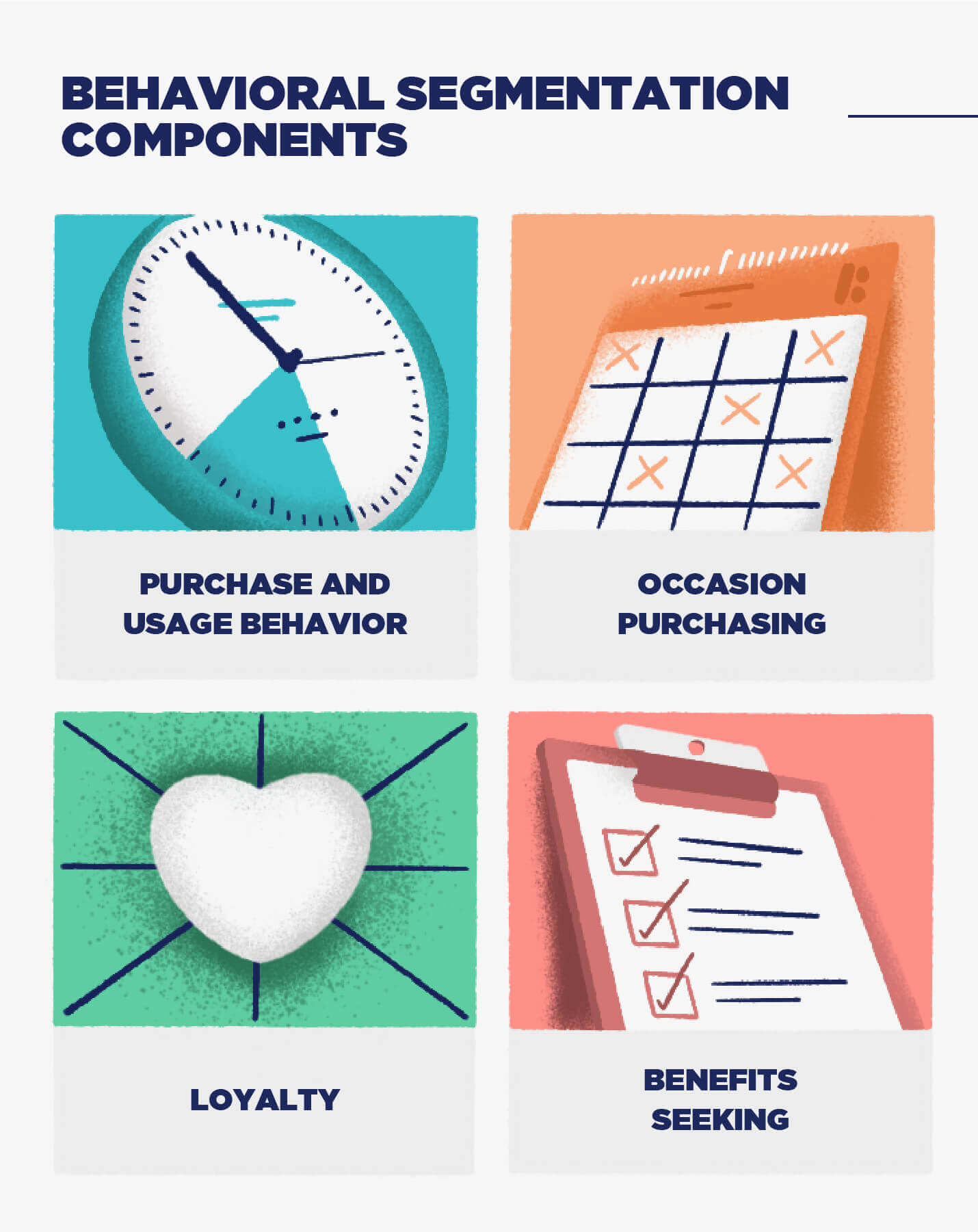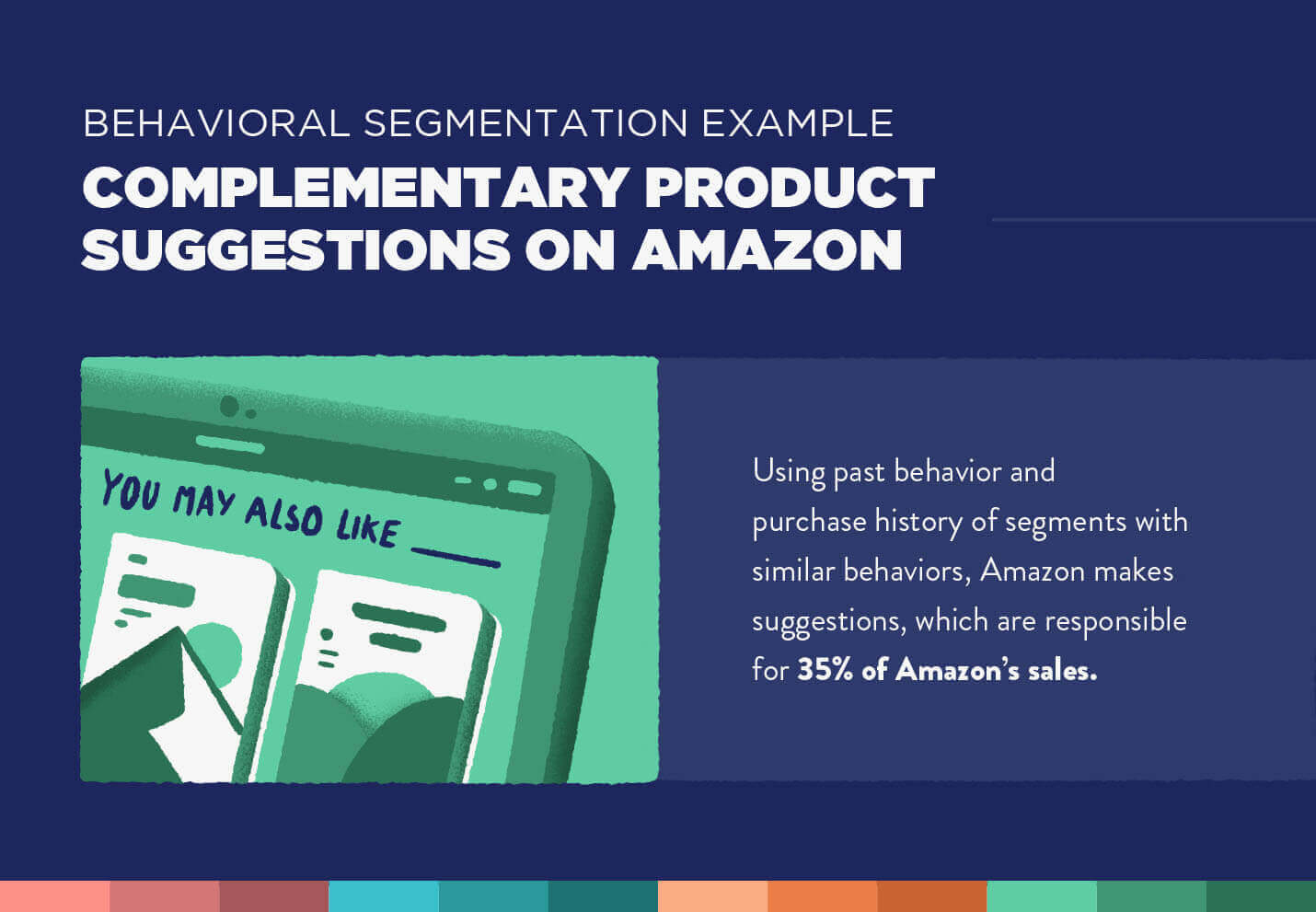Whether we like to admit it or not, our backgrounds, habits, and emotions play a huge role in our behavior.
Many people have daily habits that compel them to do the same thing day in and day out. If you are a coffee drinker, for example, you know the impulse and daily requisite of that morning ritual. As marketers, we want to understand who our metaphorical daily drinkers are and separate them from those who consume less regularly.
Behavioral segmentation isn’t about just recognizing that people have different habits, it’s about optimizing marketing campaigns to match these behavioral patterns with a particular message.
In this article, we cover the basics of behavioral segmentation and how marketers can use these strategies to reach their business goals.
What is Behavioral Segmentation?

Behavioral segmentation is the process of sorting and grouping customers based on the behaviors they exhibit. These behaviors include the types of products and content they consume, and the cadence of their interactions with an app, website, or business.
As marketers, we often walk a tightrope separating psychology and business. Most often, we bring our marketing theories of how customers will respond to a marketing campaign. Behavioral segmentation is the observation of each customer’s actions for marketers to then send their tailored messaging.
Once users are identified by their specific behavior, mobile marketers can target messages and campaigns specifically tailored to these audiences.
Why is Behavioral Segmentation Important?
Once users are identified by their specific behavior, mobile marketers can target messages and campaigns specifically tailored to these audiences. The benefits of behavioral segmentation include:
01. Personalization: Behavioral segmentation doesn’t just tell you what product or service a certain group of customers likes. It helps you understand what channels they frequent and what type of messaging they respond to, so you can boost user conversions.
02. Budget allocation: Since you know which segments spend the most and how they spend, you can better allocate efforts to target them.
03. Forecasting: Looking at each segment’s patterns, you can identify trends and more effectively plan for the future.
Behavioral Segmentation Examples

Some of the most common nuances of behavioral segmentation boil down to when users become customers (acquisition), how they use the app (user journey), how frequently they use the product (engagement), and how long they continue to use the product (retention).
Acquisition, engagement, and retention are all important factors to keep in mind when analyzing customer behavior. Understanding the following ways your users can interact with your product will help you accomplish a sustainable and constructive behavioral segmentation strategy.
01. Purchasing and Usage Behavior
Let’s use your ride-sharing app of choice as an example. A working professional uses the service to commute to and from the office Monday through Friday. On weekends, however, the user has the extra time needed to drive, park, and walk to their destination, so they never use the service then.
Understanding the behavior of this user, the ride-sharing service could target discounts on the weekends to incentivize usage on days they otherwise wouldn’t use the app.
Most companies recognize the power of tracking the purchase, usage, and consumption of their product as a means of forecasting demand. Segmenting customers based on their purchase behavior is essential to understanding when your marketing will be most effective.
02. Occasion Purchasing
This component of behavioral segmentation considers the timing within a customer’s life, year, or day as a determinant of making a purchase.
Life milestone purchases such as an engagement ring or house; seasonal purchases like holiday decorations and gifts; and daily purchases like coffee or food are all variations of occasion purchasing.
Starbucks uses behavioral segmentation to target their regular morning customers with an incentive to get them back in for another purchase later in the day. Since these regular users will likely have an afternoon coffee on occasion, Starbucks uses email marketing and push notifications within their mobile app to offer happy hour events.
03. Benefits Sought
Other differentiating factors of behavioral segmentation are the benefits different users seek from an experience. Continuing with the Starbucks example, some customers are compelled by the convenience of ordering through the mobile app and their beverage being prepared and paid for when they come in to pick it up.
Other customers are more interested in the experience of ordering with a barista and enjoying the ambience of a crowded coffee shop. Still, other customers may choose to avoid the barista, order online, and work for hours in the cafe. Understanding the different benefits users seek from the experience with the product or service can help you better serve each segment with that experience.
04. Customer Loyalty
One of the most important behavioral segmentation components is loyalty. Users that exhibit loyal behavior to business should not be overlooked. One of the most common methods marketers use to reciprocate loyalty among customers is establishing a rewards program.
A rewards program can be as simple as a “buy 9, get the 10th free” sort of mobile stamp card. And not to turn this into a behavioral segmentation case study for Starbucks, but they do just that and actually recently changed their loyalty program to offer rewards even faster.
To build long-term user retention and loyalty among app users: treat loyalty as royalty.
Additional behavioral segmentation considerations include:
- Customer satisfaction
- Engagement level
- User status

Behavioral Segmentation Strategies
Regardless of a user’s behavior, personalization is a strategy that works well. For example, we all have an affinity towards our own names, and if marketers can learn to use this effectively, users are likely to be more receptive. Personalization can be more than just calling people by their names, though.
Other strategies can be guided by behavioral segmentation; these include retargeting, targeting complementary products, marketing based on attribution, and even avoiding certain segments.
01. Retarget Desired Behaviors
Past behavior is typically a great indicator of future behavior. Although the past can never perfectly guarantee the future, it can help you make educated assumptions about what’s to come. Much like the basis of economic forecasting, marketers gain valuable insights into behavioral trends based on the consumption of users.
YouTube, for example, has built a sophisticated recommendation engine that can help retarget users with similar videos they will likely find interesting. And not only the content itself, but advertisements users have previously interacted with can help guide future retargeting efforts.
02. Use Location-Based Segmentation
Another strategy is to observe location data to strategically market to users based on their previous, current, or projected location. Geofencing is a great strategy to send push notifications to app users when they are active in a certain location, such as within a one-mile radius of the business.
Ride sharing apps use the behavioral segmentation of certain neighborhoods to forecast demand and pricing. Urban areas with a late night bar scene, for example, require more drivers in the area around the time bars close and prices increase to match the demand.
Ride sharing apps also use the current location, past behavior, and time of day to predict where the final destination may be. For example, if you are home and open the app on a Monday morning at 8:00 AM, the app might suggest the workplace as a possible destination, which simplifies the user experience.
03. Price by Device
Since business is becoming less of a face-to-face experience, marketing has become more reliant on clues to piece together the customer profile puzzle. For example, using device data and understanding how these devices are purchased by different audiences.
Apple products, for example, given their hefty price tags, are typically purchased by a more affluent customer. PC computers and Android devices are less expensive and therefore more widely available to a less affluent customer.
Understanding price sensitivity by device has allowed companies like Orbitz to show different price points to different customers based on their device.
04. Suggest Complementary Features or Products

Behavioral segmentation is helpful for building recommendation engines that can make accurate predictions of products or features each customer may be interested in next.
Amazon uses past behavior and the purchase history of segments with similar behaviors to recommend other products. These product recommendations—a direct result of behavioral segmentation—are responsible for a whopping 35% of sales.
05. Perfect Your Timing
Some users have a regimented schedule, while others are more flexible. Understanding the cadence at which users re-engage with your app can be helpful for knowing when to send push notifications, email marketing material, or any other messages to bring users back.
Analyzing your behavioral segmentation data allows you to optimize the timing of your messaging and might reveal some valuable insights.
Let’s assume your company has localized the app for South America, but after analyzing behavioral segmentation, you realize many users are using the app in the middle of the night. Instead of sending push notifications in the early morning, when your insomnia-prone users are catching up on lost sleep from the night before, you could send push notifications shortly before midnight for the most engagement.
News and media applications are deeply contemplating their push notification strategy to reach the right audience at the right time. Some newsrooms argue that the lock screen should be held sacred for breaking news, while others are confident their segmentation strategies will deliver the most engaging content for each particular user.
06. Get Historical
We’ve already mentioned that past behavior is a good indicator of future behavior (okay, a few times now). Although imperfect (disclaimer, check), it can be used to predict the customer journey and allow you to guide users to their end goal faster.
Google Drive is a great example of this with their “Quick Access” dashboard of commonly opened documents. This not only includes recently opened documents, but even documents that are commonly opened at the time you open your Drive.
Google also uses historical behavioral segmentation within their smart reply feature to predict the word you will use next in your emails. This tool uses statistical data of the words commonly used in combination with the words previously written to predict the next word or phrase.
These strategies are not only available to companies like Google and Amazon but also to small and medium-sized enterprises as well. For companies with the size and scale of Google or Amazon, however, behavioral segmentation becomes a necessity to reach their widespread audiences effectively.
Now that you understand the definition, examples, and strategies, you can start to plan how to use behavioral segmentation within your marketing.
Tips to Implement Behavioral Segmentation
Here are a few ways you can implement behavioral segmentation in your mobile marketing campaigns:
- Remarketing campaigns based on past user behavior
- Send targeted content to user segments based on interests, average order value, frequency of app use, and more.
- Focus your marketing resources on users who have shown they’re ready to convert.
- Target high-value prospective users by understanding more about who your user base is and how they use your app.
- Time your messaging campaigns for when users are most active and likely to respond favorably.
- Customize messaging and delivery times based on the user’s location, native language, local events, and time zones.